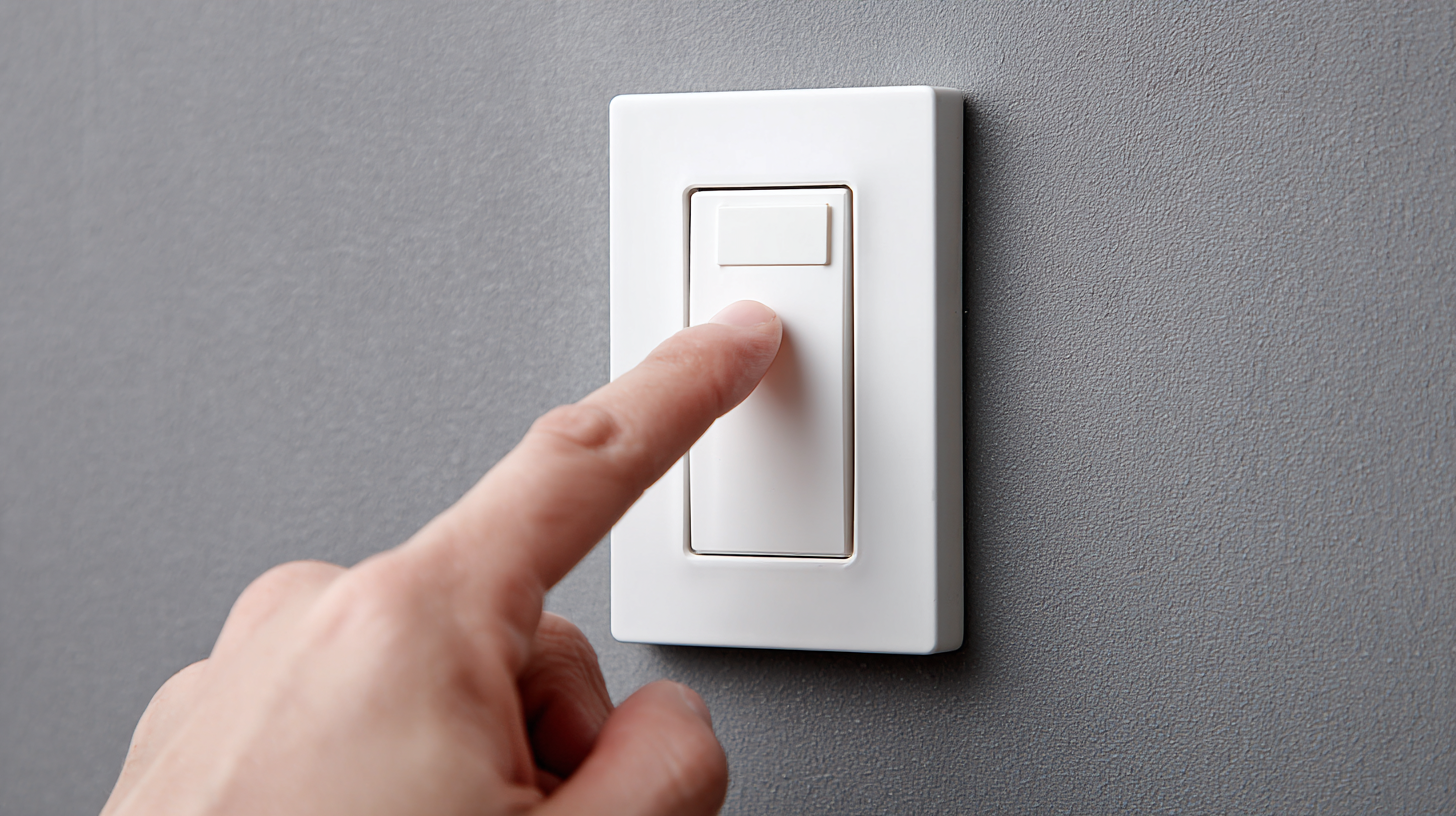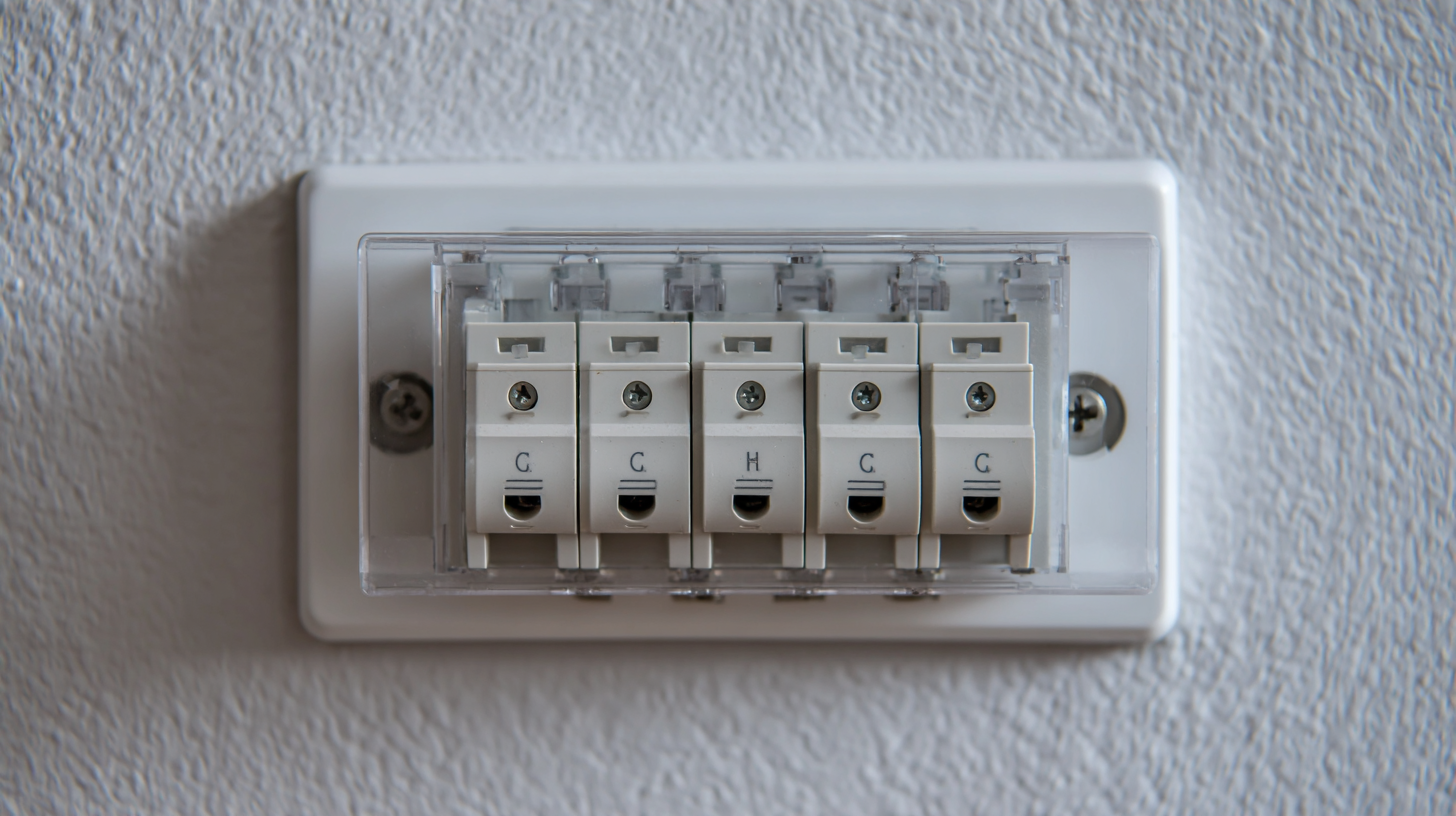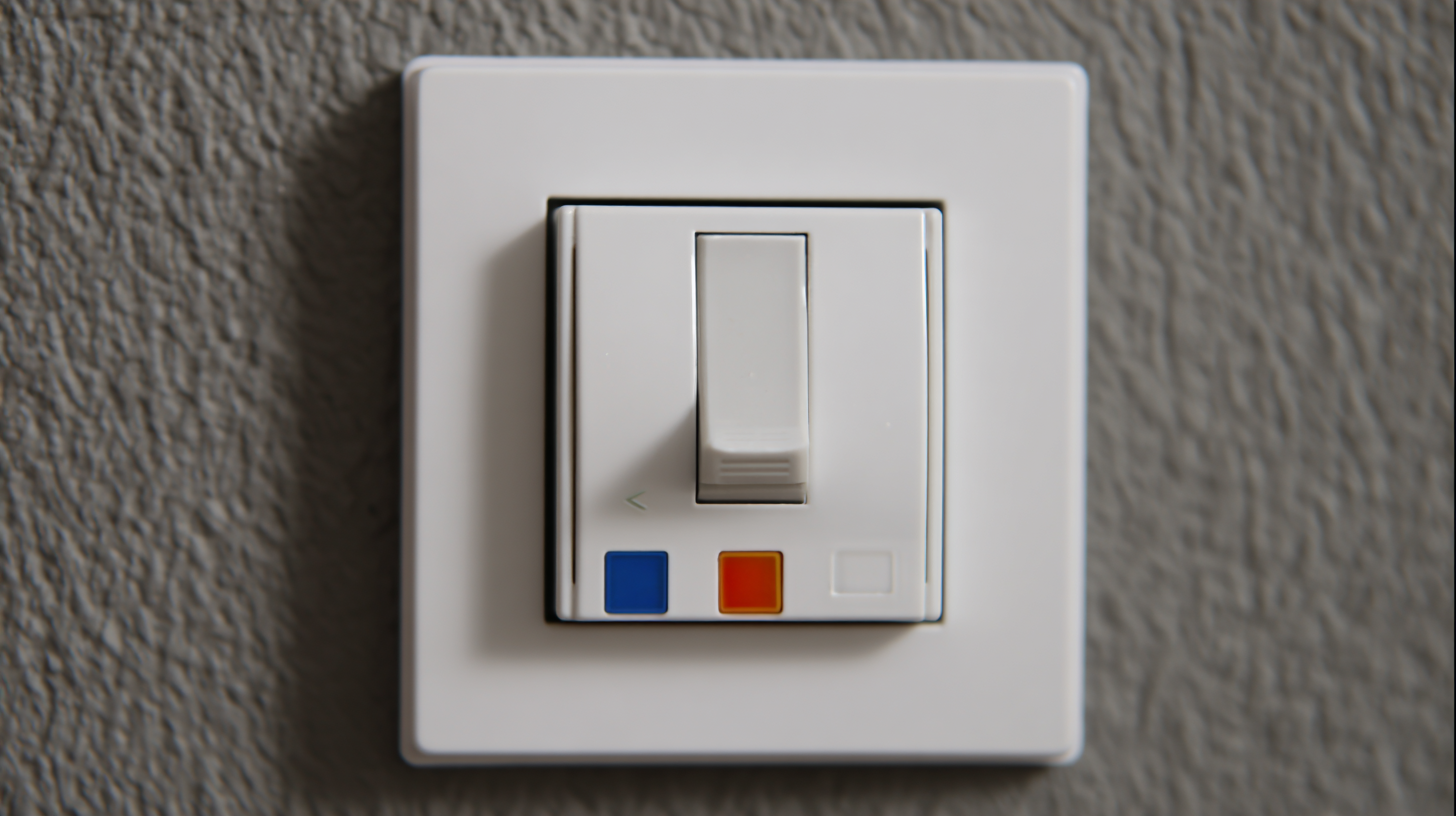In today's rapidly evolving smart home landscape, selecting the right Indoor Switch is crucial for creating a seamless and efficient living environment. An Indoor Switch serves as the backbone for managing various smart devices and integrating them into a cohesive system that enhances convenience and energy efficiency. With numerous options available, including smart switches, dimmers, and programmable timers, navigating this selection process can be overwhelming.

Factors such as compatibility with existing systems, functionality, design preferences, and ease of installation need careful consideration to ensure that the chosen Indoor Switch meets the specific needs of your home.
This guide will walk you through essential aspects to ponder while making your decision, empowering you to harness the full potential of your smart home setup.
 When setting up a smart home, selecting the appropriate indoor switches is crucial for optimizing convenience and functionality. One of the primary types of indoor switches is the smart toggle switch, which replaces traditional switches and allows for remote or voice control. These switches are typically compatible with various smart home ecosystems, like Amazon Alexa or Google Home, making them easy to integrate into existing setups.
Additionally, smart toggle switches often come with features such as dimming capabilities and scheduling options, enhancing the ambience and energy efficiency of your home.
When setting up a smart home, selecting the appropriate indoor switches is crucial for optimizing convenience and functionality. One of the primary types of indoor switches is the smart toggle switch, which replaces traditional switches and allows for remote or voice control. These switches are typically compatible with various smart home ecosystems, like Amazon Alexa or Google Home, making them easy to integrate into existing setups.
Additionally, smart toggle switches often come with features such as dimming capabilities and scheduling options, enhancing the ambience and energy efficiency of your home.
Another popular option is the smart plug, which transforms any ordinary outlet into a smart one. Smart plugs allow users to control not just lamps but also appliances remotely, providing versatility in a smart home environment. They often include features like energy monitoring and timers, helping homeowners track power consumption and automate devices. Finally, consider smart paddle switches, which provide a modern aesthetic and allow for seamless integration of multiple controls in one device. Understanding these different types of indoor switches and their functionalities can greatly enhance the efficiency and comfort of your smart home experience.
When selecting an indoor switch for your smart home setup, it's essential to consider several key features that enhance functionality and convenience. One of the most important aspects is compatibility with your existing devices. Ensure that the switch you choose can seamlessly interact with your smart lighting system, hubs, and voice assistants. This compatibility will streamline your home automation experience, allowing you to control everything effortlessly.
Another critical feature to look for is remote access capability. A smart indoor switch should allow you to control your lights from anywhere through a mobile app. This is particularly useful for managing your home's lighting while you're out or at work. Additionally, consider switches that offer programmable schedules and timers. These features enable you to set specific times for lights to turn on or off, adding an extra layer of security and convenience.
**Tips:** When choosing a smart switch, pay attention to the installation process. Some switches require a neutral wire, while others do not. If you're unsure about the electrical configurations in your home, it's advisable to consult a professional. Furthermore, look for models with user-friendly interfaces and strong customer support to address any potential setup challenges. Investing in quality switches will ensure a smoother smart home experience.
When selecting the right indoor switch for your smart home setup, evaluating compatibility with your existing ecosystem is crucial. As various smart home devices proliferate, the need for seamless integration becomes paramount. Recent updates to the Matter protocol, particularly version 1.4.2, have addressed this concern by enhancing device interoperability and security, making it easier for consumers to connect different brands within their smart home setups.
Moreover, data from industry reports indicate that the consumer Wi-Fi router market is projected to grow from $4.397 billion in 2025 to $6.851 billion by 2033, reflecting the increasing demand for robust connectivity solutions essential for smart home devices. Similarly, the indoor antenna market is expected to expand significantly, indicating a growing focus on improving seamless coverage for smart devices. These trends underline the importance of selecting switches and other components that not only match your smart home ecosystem but also enhance your overall user experience by ensuring reliable and efficient communication between devices.
When it comes to selecting the right indoor switch for your smart home, energy efficiency ratings play a crucial role in both cost savings and environmental impact. According to the U.S. Department of Energy, using energy-efficient devices can lead to a reduction of up to 30% in energy consumption, translating into significant savings over time. Smart switches that are equipped with energy monitoring capabilities not only help in tracking energy usage but also in identifying peak consumption times and encouraging more disciplined energy habits among users.
Another vital aspect to consider is the Energy Star certification, which assures consumers that the product meets strict energy efficiency guidelines. Studies from the Environmental Protection Agency (EPA) have shown that Energy Star certified products can help prevent more than 300 million metric tons of greenhouse gases each year. When selecting a smart switch, look for those that provide clear energy efficiency ratings to ensure you're making a choice that benefits both your budget and the planet. Investing in tech that prioritizes energy efficiency is not just a smart financial decision but also a step towards a more sustainable future.

When selecting indoor switches for your smart home setup, there are several critical considerations that can greatly enhance both installation and user experience. First, ensure that the smart switch is compatible with your home’s electrical system. Many switches require a neutral wire for installation, which might not be available in older homes. Evaluating your existing wiring can prevent complications and extra expenses during setup. Additionally, consider the switch's size and design; a sleek and compact switch will better fit into your existing decor and won’t block adjacent outlets.
User experience is another vital factor to keep in mind. Look for smart switches that are easy to operate, whether via a mobile app, voice control, or traditional switch mechanisms. Features like customizable timers, dimming options, and integration with other smart home devices can significantly enhance convenience and functionality. Moreover, consider how intuitive the app interface is, as a user-friendly design can make a significant difference in managing your home's lighting effectively. Ultimately, the right combination of installation ease and user experience can transform your living space into a more comfortable and intelligent environment.
| Feature | Consideration | User Experience |
|---|---|---|
| Compatibility | Ensure the switch works with existing smart home systems (e.g., Alexa, Google Home). | Seamless integration makes controlling devices easier for users. |
| Load Capacity | Check the electrical load requirements for the devices to be connected. | Matches user needs for both standard and high-load devices. |
| Wireless or Wired | Decide if a wired connection is needed for reliability or if wireless is sufficient. | User flexibility in placement and setup of devices. |
| Control Method | Choose between manual, app-based, or voice control options. | Diverse ways to control lighting enhance user convenience. |
| Aesthetics | Select a design that matches the home decor and personal style. | Improves overall look and feel of home environments. |
| Installation Process | Consider if professional installation is needed or if it's DIY-friendly. | Easier installation boosts user satisfaction and confidence. |
| Price Range | Evaluate budget and compare features among switches in different price brackets. | Finding a balance between cost and desired features enhances user satisfaction. |






